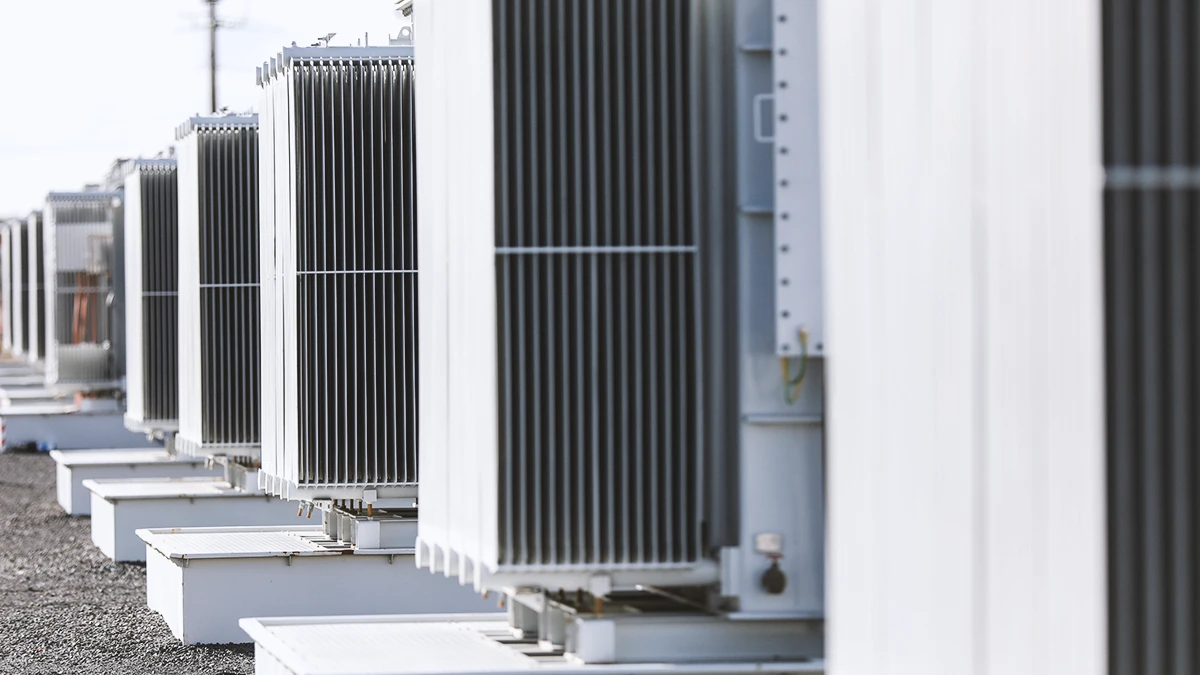(Re)in Summary
• Insurers in Australia are becoming increasingly comfortable in underwriting risk from battery energy storage systems (BESS).
• More than twice as much mega-watt hours of storage capacity came online in 2023 compared to 2022.
• So far BESS underwriters have not been significantly affected by claims, making loss ratios very attractive.
• While capacity is flooding into the market, relatively few insurers are prepared to take the lead.
• This is keeping premiums high, and making the sector even more attractive.
Despite recent disasters at some battery insurance facilities in Australia, brokers in the country are reporting a steadily growing appetite for underwriting these kinds of projects.
However, there are still relatively few insurers prepared to take a lead position. Those that do tend to have a strong engineering focus, and include HDI Global, Berkshire Hathaway and Allianz Global Corporate & Speciality.

Ben Humphries
Head of Power and Energy in Australia for BMS“It feels as if the market is starting to become comfortable with battery technology, particularly from major suppliers like Tesla and CATL and the increasing use of LFP [Lithium Iron Phosphate] cell chemistry,” says Ben Humphries, Head of Power and Energy in Australia for BMS.
“At the same time, there has not been a significant amount of loss experience in the market, so it feels as though insurers’ battery portfolios should be performing very well.”
The installation of battery energy storage systems (BESS) is soaring in Australia at the moment, with recent data from Sunwiz, a consultancy, suggesting that 2.468 mega-watt hours of storage capacity was installed in 2023. This is more than double the amount installed in the previous year.
Australia’s first major battery energy storage facility opened in Hornsdale, South Australia in 2017.
Maggie Wang, Product Lead for Energy at QBE Australia Pacific, says that the past seven years of experience with the technology – both in Australia and around the world – has given insurers the underwriting confidence they need to drive the sector forwards.
“QBE is committed to supporting outdoor, well-managed BESS projects, from construction to operational stage, to play our role in the energy transition,” says Wang.
She says that “lessons learnt and subsequent improvements” following incidents around the world have helped original equipment manufacturers (OEMs) produce better batteries.
This has “assisted insurers, including QBE, to refine their appetites and underwriting approaches”, she adds.
Risk and claims
There have been a number of high-profile incidents at battery energy storage facilities in Australia.
In July 2021, two large battery cells manufactured by Tesla caught fire in Moorabool in Victoria. This was due to a process known as thermal runaway, which occurs when the temperature of a battery becomes so high as to trigger an uncontrolled chemical reaction.
In September 2023, a fire broke out at another Tesla facility in Bouldercombe in Queensland, although a subsequent investigation concluded that this was due to the power interface with the grid rather than the batteries themselves.
Despite such incidents, though, insurance losses remain low.

Alistair Williams
Client Director for Energy and Power for Australia at Lockton“Overall technology has performed very well, with the thermal runaway risk usually restricted to individual [battery] containers or [groups of containers],” says Alistair Williams, Client Director for Energy and Power for Australia at Lockton.
“In cases where there have been issues, we have seen a more proactive approach by either the system integrator or OEM [original equipment manufacturer] to protect their reputation by rectifying defects and damage without necessarily seeing these losses realised in the insurance market.”
On top of this, battery storage facilities tend to be less exposed to nat cat risk than many other sources of renewable energy. For example, severe cyclones can disrupt energy production at wind farms while hailstorms can cause significant damage to solar panel installations – as was seen in Texas in the US earlier this year. Nat cat risk is a particular concern in Australia, where the frequency and severity of events have increased in recent years.
“ESG pressures are forcing insurers to diversify away from traditional energy generation, and battery storage is seen as a very good option,” says Williams.
“Without looking to oversimplify things, battery storage facilities are typically seen as a plug-and-play type of asset, without the mechanical or weather exposures seen in wind farms or solar power generation, which have different risk profiles.”
This is leading to battery projects being “massively oversubscribed” by insurers, says Humphries from BMS, compared with other green energy projects.
“On the contrary it can be a fairly long walk to get the necessary capacity that we need for solar PV,” he says.
Pricing
The relatively benign risk profile of BESS facilities and the excess capacity now flooding into markets should be having a downward pressure on pricing, but it isn’t.
“I would suggest that rates are still conservative, and there is room for these to be reduced to better match the actual risk profile of these assets, particularly as developers learn and refine the way project risks are mitigated,” says Williams.
One reason for this is that, while a growing number of insurers are keen to be involved in battery energy projects, few are willing (or have the capabilities) to take the lead.
“These lead insurers have to be of an acceptable calibre from an engineering and underwriting perspective, in order to make sure that everyone has faith in what they’re doing,” says Williams. “Co-insurers want to be able to trust the expertise of the lead insurer before they provide capacity to support a project.”
He adds that this is no different to what is typically seen in the traditional energy space, which is also dominated by insurers with a strong engineering focus.
Alistair Williams
Client Director for Energy and Power for Australia at LocktonThis lack of front-end pricing competition may be one reason why so many co-insurers are keen to be involved in the project, once the lead has been established.
“As the sector develops and more insurers become comfortable with taking lead positions in the battery space, we will start to see downward pressure on pricing and terms and conditions for these assets,” predicts Humphries.
This may take some time to filter through, though. One issue playing on insurers’ minds is that it wouldn’t take much to burn through the capital that is currently available.
“The premium pool for battery storage projects in Australia is still relatively small as a proportion of the premium pool for energy generation as a whole,” says Williams. “This means that you wouldn’t need too many losses to significantly erode that premium pool, which could lead to a sudden price spike and coverage changes. This may be one reason for a lack of competition among lead insurers.”

Maggie Wang
Product Lead for Energy at QBE Australia PacificNonetheless, the trajectory has been set, and capacity in the market is likely to grow in the coming months and years.
“Insurance is an important enabler in supporting the green energy transition, as without insurance, renewable projects are often unable to secure finance to proceed,” says Wang from QBE. “We need a lot of storage capacity for renewable power generation, both short and long duration, and these projects need insurance to be viable.”














